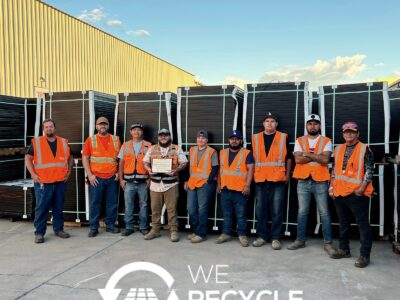Many scientists assert that hydrogen energy is the cleanest alternative to fossil fuels, but sourcing green hydrogen is not easy. With high energy prices and the electrolysis process for creating green hydrogen relatively expensive, a need for cheap hydrogen fuel is still prevalent. A Texas startup may have found the solution, and it comes from abandoned oil wells.
Cemvita Inc. has been experimenting with microbes and enzymatic processes that draw hydrogen from crude oil. With numerous abandoned wells in the U.S., the company believes they have tapped into an alternative source of hydrogen.
Dubbed “gold hydrogen” — a play on the “black gold” nickname given to oil during the Oil Rush of the early 20th century — this new energy source is created without using any extra power. Better yet, it is incredibly cost-effective to produce. Cemvita claims it can produce gold hydrogen at less than $1 per kilogram because its microbial process uses almost no electricity. The price seems remarkable as the Hydrogen Shot, an initiative launched in 2021 by the U.S. Department of Energy, created the goal “to reduce the cost of clean hydrogen by 80% to $1 per 1 kilogram in 1 decade (‘111’).”
“Gold hydrogen presents a unique opportunity for innovative companies who would like to lead the energy transition, not follow,” Cemvita CEO Moji Karimi said in a statement. The firm, co-founded by Karimi and his sister, Dr. Tara Karimi (the company’s chief science officer), in 2017, hopes to produce enough gold hydrogen to last for decades. Experimental processes began in February 2022, with field tests conducted in July 2022.
According to Charles Nelson, chief business officer of Cemvita, it’s been a “huge success.” Partnering with an oil production company in the Permian Basin of West Texas, scientists tested the microbes in a depleted well and let them go to work. The results are hydrogen levels three times higher than baseline estimates.
Hydrogen energy is one of the best sources of alternative energy. It’s naturally occurring and can be manufactured. When burned, its only byproduct is water. No harmful emissions come from hydrogen fuel, so many automobile makers are trying to use it as a substitute fuel for cars. It has double the efficiency of fossil fuels. Though more testing is needed on that front, firms like BMW are making progress.
As mentioned above, hydrogen fuel production is expensive and energy-intensive. Currently, multiple hydrogen products are classified by colors: green, blue, grey, brown, and now, gold. The colors identify the process used for creation, like electrolysis, steam-methane, oil, or coal production. Yet, there hasn’t been a microbial or biological-based extraction method until now.
Cemvita’s microbial process mimics natural occurrences in oceans. Oil-eating microbes already exist in nature and have been known to aid in the cleanup of oil spills.
According to National Oceanic and Atmospheric Administration, these microbes munch on oil as part of “biodegradation,” which release molecules of carbon, hydrogen, and oxygen, the chemical components of petroleum.
These bacteria are found in warm and cold-water climates, like the Persian Gulf and the Chukchi Sea in Alaska. They take a few days to reach a population size big enough to eat most of this oily feast, and each bacteria is specific to the type of water they live in. Therefore, they can’t be integrated into other environments they would not live in naturally.

Photo Courtesy Cemvita
Gold hydrogen still faces regulatory obstacles before it can be harvested en masse. A good deal of carbon dioxide is produced during the microbial process. Cemvita will have to offset these emissions or permanently sequester them. Also, if the company can’t purchase oil wells outright, it will have to partner with oil and gas companies or license its technology to them.
Still, the company sees an opportunity with the “reservoir microbiology” system. “Reservoir microbiology has incredible potential for unlocking the promise of Gold Hydrogen in a clean, efficient way,” Zach Broussard, head of petroleum microbiology at Cemvita and gold hydrogen program manager, said in a statement. “Through this program, we are looking forward to collaborating with companies who value true disruptive innovation and are committed to pioneering the clean energy transition, not just talking about it.”





